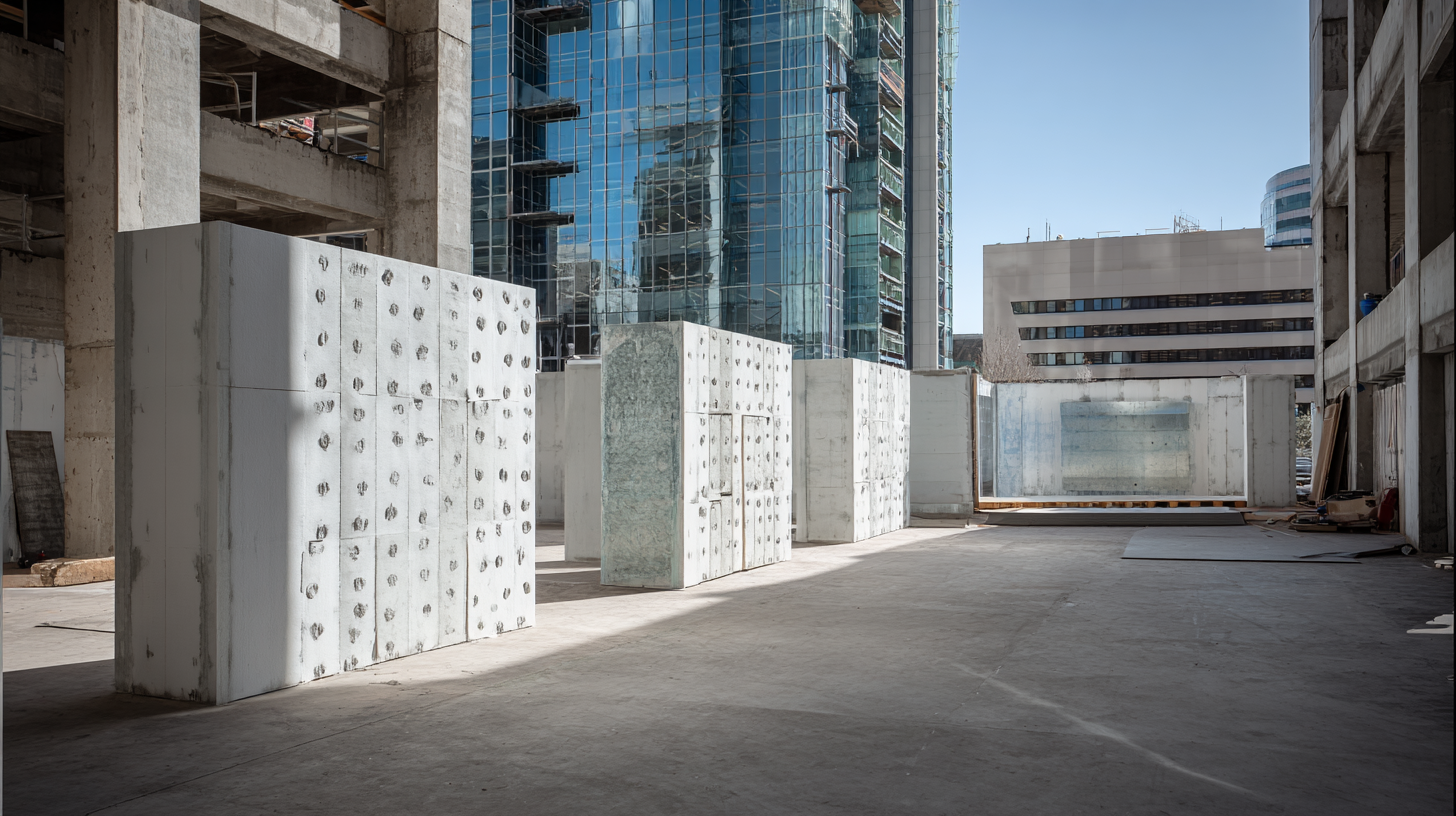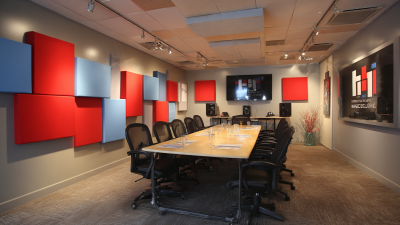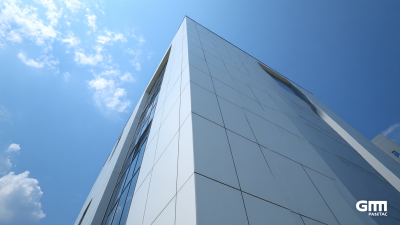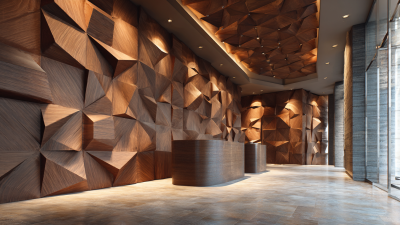As the construction industry evolves, the focus on Building Walls increasingly integrates innovative technologies and materials aimed at enhancing energy efficiency. Recent studies indicate that buildings account for approximately 39% of global energy-related carbon dioxide emissions, emphasizing the need for sustainable practices in wall construction (International Energy Agency, 2021). Smart materials, such as phase change materials and self-healing concrete, are gaining traction, promising not only to reduce energy consumption but also to prolong the lifespan and durability of Building Walls. Furthermore, the market for energy-efficient building materials is projected to grow significantly, with estimates suggesting a rise from USD 16 billion in 2020 to over USD 30 billion by 2026 (Research and Markets, 2023). This shift towards smarter, more efficient Building Walls is not just a trend but a necessary evolution, aligning with global sustainability goals and the increasing demand for eco-friendly building solutions.

The building materials industry is witnessing a transformative shift with the increasing integration of smart materials that significantly enhance energy efficiency in building walls. These innovative materials are designed to adapt to environmental changes, optimizing thermal performance and reducing energy consumption. As the global building envelope market continues to grow, projected to reach over USD 189 billion by 2033, a focus on energy-efficient building practices becomes crucial for developers and architects alike.
Among the leading trends reshaping this landscape are advanced insulation techniques and responsive materials that can alter their properties based on weather conditions. Startups are at the forefront of this revolution, introducing groundbreaking technologies that not only improve energy efficiency but also promote sustainability. For instance, phase-changing materials that store and release thermal energy help maintain comfortable indoor temperatures while minimizing reliance on heating and cooling systems. As these trends evolve, embracing smart materials will play a pivotal role in fostering eco-friendly building designs and achieving sustainable development goals.
Phase Change Materials (PCMs) are rapidly gaining attention in the construction industry for their ability to enhance the thermoregulation of buildings. These innovative materials can absorb, store, and release thermal energy during phase transitions, typically from solid to liquid and vice versa. According to a report by the International Energy Agency (IEA), integrating PCMs can reduce energy consumption by up to 30%, offering significant potential for energy-efficient building design. This capability not only contributes to maintaining comfortable indoor conditions but also assists in reducing reliance on HVAC systems, leading to cost savings in energy bills.

One of the key benefits of PCMs is their ability to mitigate temperature fluctuations within buildings. By strategically placing these materials in walls, ceilings, and flooring, structures can maintain consistent thermal performance throughout various weather conditions. A study published by the Building Research & Information journal indicated that buildings equipped with PCM-infused materials could achieve a 30% reduction in peak cooling loads. This makes them an excellent choice for regions with extreme temperature variations.
Tips: When considering the integration of PCMs in your building design, ensure that you select materials with appropriate phase transition temperatures to match your local climate. Additionally, working with a professional experienced in smart materials can help optimize placement for maximum efficiency and comfort.
Self-healing concrete represents a groundbreaking advancement in the quest for durable and sustainable building materials. This innovative technology is designed to automatically repair cracks that develop over time, significantly enhancing the longevity of wall structures. By incorporating specific additives, such as bacteria or healing agents, self-healing concrete can respond to environmental factors, sealing fissures as they form. This not only prolongs the life of the structure but also reduces the need for frequent repairs, minimizing maintenance costs and resource consumption.
The integration of self-healing concrete in wall designs aligns perfectly with contemporary trends aimed at improving energy efficiency. Structures using this material can maintain their integrity for more extended periods, leading to better thermal performance and reduced energy consumption for climate control. Additionally, the utilization of such innovative materials reflects a broader shift toward sustainability in construction practices, evolving to meet the demands of an increasingly eco-conscious society. As builders continue to explore the potential of self-healing concrete, it promises to redefine building longevity while contributing to a greener future.
| Material Type | Key Feature | Energy Efficiency (kWh/m²/year) | Longevity (Years) | Sustainability Rating |
|---|---|---|---|---|
| Self-Healing Concrete | Automatic crack repair | 15 | 50 | A+ |
| Aerogel Insulation | Exceptional thermal properties | 8 | 30 | A |
| Phase Change Materials | Temperature regulation | 12 | 25 | A |
| Recycled Steel Frames | High strength and durability | 10 | 75 | B+ |
| Biocomposite Materials | Made from natural fibers | 9 | 20 | A |
The integration of IoT technologies into building wall design is set to revolutionize the way we monitor and manage wall performance. By embedding sensors within smart materials, walls can continuously collect and transmit data regarding temperature fluctuations, humidity levels, and structural integrity. This real-time monitoring allows for swift detection of issues such as moisture accumulation or thermal inefficiencies, enabling timely interventions that can prevent more significant damages and reduce maintenance costs.

Moreover, smart walls equipped with IoT capabilities can optimize energy efficiency. Through automated control systems, these walls can adjust insulation properties in response to environmental changes, ensuring optimal indoor conditions while minimizing energy consumption. For instance, if sensors detect an increase in external temperature, the system can trigger adaptive insulation processes, helping to keep heating and cooling costs low. The potential for real-time data analysis further enhances this efficiency, providing insights that can guide future construction methods and energy management practices, ultimately leading to smarter, more sustainable building designs.
The construction industry is witnessing a significant shift towards energy-efficient wall designs that play a crucial role in mitigating carbon footprints. According to a report by the World Green Building Council, buildings are responsible for 39% of global carbon emissions, with construction materials contributing a substantial portion of this figure. By integrating smart materials that enhance thermal insulation and energy efficiency, architects and builders can significantly reduce the energy consumption of buildings. For instance, incorporating phase change materials can help manage building temperature more effectively, decreasing reliance on heating and cooling systems.
Moreover, the adoption of sustainable wall designs is gaining traction, with studies indicating that energy-efficient walls can reduce overall energy use by up to 50% compared to traditional methods. A case study published by the International Energy Agency found that implementing modern energy-efficient wall technologies in residential constructions not only cuts down on energy costs but also accelerates the return on investment through reduced utility bills and government incentives. As these designs continue to evolve, their impact on carbon emissions could be profound, contributing to global sustainability goals and setting new standards for future construction practices.






